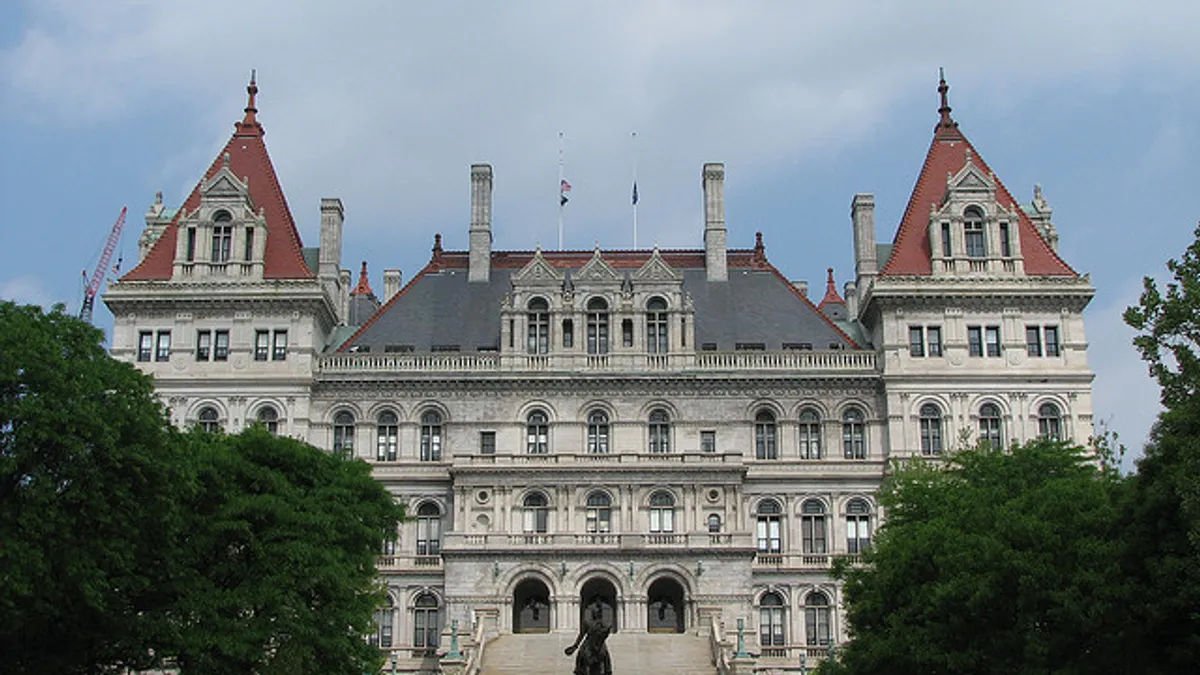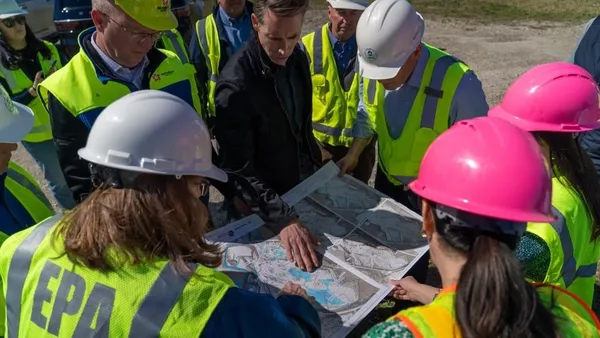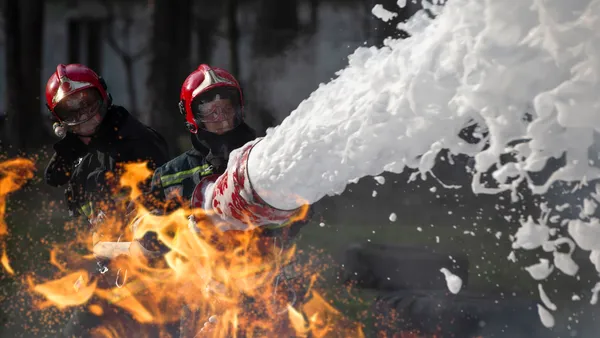Dive Brief:
- New York Governor Andrew Cuomo released a new multi-agency "Methane Reduction Plan" that is part of the state's goal to reduce energy sector emissions 40% by 2030, based on 1990 levels. According to the plan, landfills account for 58% of the state's methane emissions and 5% of overall emissions.
- Recovering or recycling organic waste from large generators is listed as the state's top priority for reducing emissions from landfills. This is said to include support and funding from multiple agencies for food donation networks, composting facilities and anaerobic digesters.
- As for landfills themselves, the report cites proposed revisions to the Part 360 permit system that would require the installation of horizontal gas collection wells in newly constructed landfills or cells. The state also plans to review strategies for active or closed sites and review its guidance in comparison to the Environmental Protection Agency's greenhouse gas reporting criteria to identify any potential regulatory updates.
Dive Insight:
The governor's press release cites the federal governments recent steps to "abandon three major efforts to address methane pollution" in the energy sector as a catalyst for this plan, in addition to New York's long-term goal of reducing emissions 80% by 2050. Last month, Cuomo's own proposal for enacting a commercial organics diversion requirement by 2021 didn't survive budget negotiations in the New York state legislature. Yet Cuomo has since said he has no further priorities for the remainder of the legislative session that ends in June.
Leading up to this budget decision the state released a report estimating upward of $22 million in economic benefits from a diversion requirement and the proposal was highlighted as another way to make New York a leader in environmental policy. This would have aligned with ongoing diversion progress within state agencies and state-run facilities as well. Though after pushback from certain large generators reportedly derailed the proposal, it appears Cuomo is content with advancing organics diversion through a more voluntary approach. State funding for research and development of new processing infrastructure may help this market grow, though not necessarily at the same rate it would have if companies could count on millions of tons of guaranteed feedstock within the next few years.
Addressing current landfill requirements could yield more universal results, especially because gas capture systems are currently only required for sites with more than 2.5 million tons of capacity. Industry associations are already involved with discussions over updating the Part 360 permit, as well as a potential stay on federal requirements, which will add a variety of new factors to the process.















